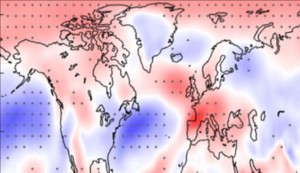Climate change will bring bigger swings in European summer temperatures
18 May 2020

Summers in Europe will feature more unusually cooler days as well as hotter ones in the future due to climate change, new research has revealed.
While more extreme temperatures, and higher average temperatures, have long been predicted by scientists, a team at the University of Reading have now carried the most sophisticated study yet to fill in the gaps about how global warming will actually influence summer and winter temperatures in the northern hemisphere.
They found that the likelihood of temperatures rising above or falling below average will not be affected in the same way in different seasons and regions.
The study, published today (Monday 18 May) in Nature Geoscience, finds that in addition to the predicted average temperature increase, temperature fluctuations around the average will become more erratic during summer in Europe by the end of the century.
In winter, temperature deviations relative to average will be less pronounced over most of the northern hemisphere, as unusually warm days become relatively less common, and unusually cold days even rarer.
Dr Talia Tamarin-Brodsky, researcher in meteorology at the University of Reading, said: “Previous studies have assumed that hot and cold variations around the warmer future average temperature will be affected equally. However, our research shows this is not the case.
“In Europe, there will be more days in summer that are noticeably hotter or colder than average as temperatures vary more. In winter, colder than average days will become less likely over most of the northern hemisphere, which means that when they do come they will be even further from what we are used to, making it more difficult for human infrastructure, and the natural world, to cope.”
Extremely hot days are expected to become even more stark as the average global temperature rises under climate change, but the new study was the first to explore why hot and cold fluctuations will be affected differently in the northern hemisphere, both in summer and winter.
The study was co authored by fellow Reading meteorologists Professor Ted Shepherd, Sir Brian Hoskins (also Chair of the Grantham Institute for Climate Change), and Dr Kevin Hodges. They found that regional warming patterns in Europe expected under climate change would also affect neighbouring regions as hot and cold air masses are carried by atmospheric weather systems. This will cause different temperature deviations in different parts of the world.
Dr Tamarin-Brodsky said: “We may be able to get used to a warmer world, but more apparent temperature fluctuations from the average could present risks to our health, agriculture and infrastructure, as well as to the natural world. It is therefore important to understand how regular and how severe these temperature deviations will be at different regions and times of year to help plan and prepare to climate change.”
Full reference
Tamarin, T., Hodges, K., Hoskins, B., Shepherd, T. (2020); 'Changes in northern hemisphere temperature variablity shaped by regional warming patterns'; Nature Geoscience; doi: 10.1038/s41561-020-0576-3
Image caption: Projected change in intensity of cold anomalies during summer
